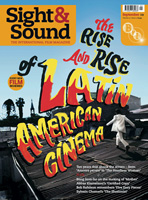Out of the past: Frantisek Vlácil
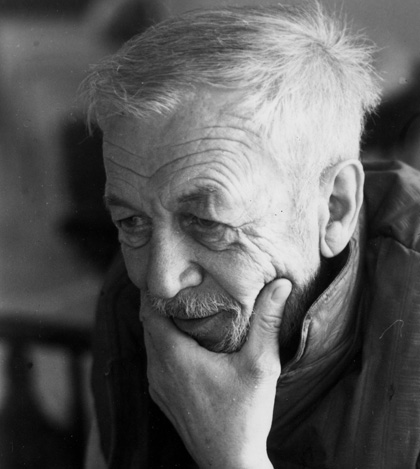
Less celebrated internationally than his near contemporaries Forman and Menzel, the late Czech director Frantisek Vlácil’s visionary medieval epics have recently been rediscovered in the West. But there was more to him than that, finds Michael Brooke
For much of the half-century since the premiere of Frantisek Vlácil’s feature debut The White Dove (Holubice), the Czech director has been treated in his home country with a reverence out of all proportion to his undeservedly minuscule international profile. Although he is considered one of the most important harbingers of the Czech New Wave – and lived to see his medieval epic Marketa Lazarová (1967) voted the best Czech film of all time by a panel of local critics and industry experts on the centenary of Czech cinema in 1998 – his work was practically invisible in the UK until the enterprising Second Run DVD label released his masterpiece in 2007. Thankfully, Vlácil’s UK profile is set to rise significantly this year: Second Run has also disinterred his films The Valley of the Bees (Udolí vcel, 1967) and Adelheid (1969), and September sees a near-complete retrospective of his work playing in London, Edinburgh and Glasgow.
The experience of watching the 14 films being screened (12 features plus two shorts) reveals that initial impressions of Vlácil are misleading. Although his best-known films suggest a fondness for widescreen medieval epics, his other work was shot in Academy ratio, and is mostly set within his own adult lifetime (1924-99), with particular concentration on the period 1945-47 – the end of World War II and the start of communist rule in Czechoslovakia. Several of the films have child protagonists, and the later ones in particular are chamber pieces far removed from Marketa Lazarová’s baroque extravagance. What they all have in common, though, is a painter’s eye for telling and/or dissonant detail, an intensely realised sense of period and place, a preference for music over dialogue and a strong affinity with landscapes and their natural flora and fauna.
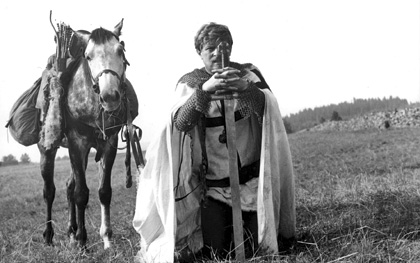
Given that the 1960s saw the emergence of his most acclaimed work, Vlácil’s films are often lumped in with those of the Czech New Wave – but it’s not an entirely comfortable fit. A decade older than Milos Forman, Jirí Menzel and Jan Nemec, Vlácil lacked their film-school training, having started out in the 1950s as a maker of industrial documentaries for the Czech Army, following studies in aesthetics and art history and early dabbling in puppet animation. This background can be seen in his Venice Festival prizewinner Glass Skies (Sklenená oblaka, 1958), an almost wordless short about a boy, an old man and their mutual love of flight. It would be squarely in Red Balloon territory were it not for the ample evidence of Vlácil’s ecstatic eye, turning starkly modernist architecture into a series of trompe l’oeil effects as initially invisible panes of glass suddenly bisect his compositions when they’re spattered with rain or shatter at the impact of a toy plane. His future cinematographer Frantisek Uldrich, who shot the majority of his films from 1968 onwards, confirmed that Vlácil was an obsessive storyboarder, constantly working out compositions within compositions in the manner of Eisenstein or Welles.
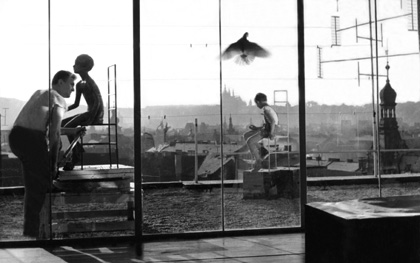
His first feature The White Dove (1960) expanded on these interests, and is now regarded as one of the main precursors of the Czech New Wave. A wheelchair-bound boy and an artist inadvertently intercept a homing pigeon and nurse it back to health while trying to work out its rightful home – and protecting it from local predators (a skirmish between the dove and a black cat in the service shaft of a block of flats is genuinely thrilling). Vlácil said the reason for the film’s lack of dialogue was simply to avoid dumping too many lines on his inexperienced child actors, but it fits squarely into his aesthetic as a whole. If The White Dove occasionally falls prey to overly self-conscious symbolism (the cat is nudgingly named Satan), it was clearly a bold and striking debut.
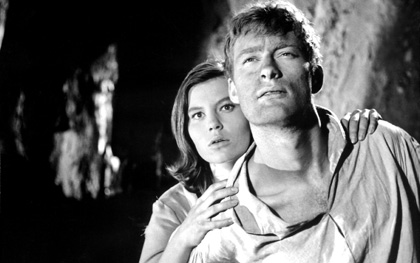
The Devil’s Trap (Dáblova past, 1961) was the first of a loose trilogy of films about the distant past, in this case the 16th century, during the time of the Inquisition. The opening shot of a gnarled effigy of Christ in agony, dwarfing a distant figure on the horizon, neatly establishes a cruel world where religious authority holds absolute sway and an innocent miller’s encyclopedic knowledge of the land’s natural properties is interpreted as evidence of a diabolical pact. In an interview with Czech film historian Antonín Liehm, Vlácil said that one of his primary aims with his historical films was to strive for authenticity – the impression, as it were, that his camera had travelled back through the centuries – and it’s something he fully achieved both with the wild sprawl of Marketa Lazarová and the formal rigour of Valley of the Bees, which rank alongside Bergman’s The Seventh Seal and Virgin Spring, Tarkovsky’s Andrei Rublev and Welles’ Chimes at Midnight as the most convincing evocations of the medieval era ever committed to film.
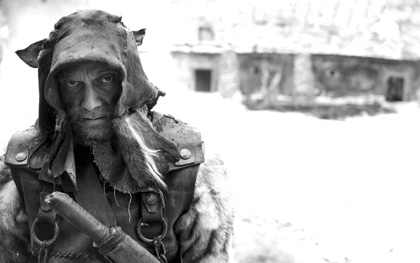
Vlácil had ambitions to dramatise the Thirty Years’ War of 1618-48 and would undoubtedly have made more historical films. But in the late 1960s, like many contemporaries, he fell foul of the communist authorities, who followed the Soviet invasion of August 1968 with the so-called ‘normalisation’ period, a 20-year cultural crackdown during which production was rigorously centralised and controlled. While the big-budget Marketa Lazarová was heralded from the start as a national masterpiece (an entire issue of the quarterly magazine Czechoslovak Film was devoted to it), Valley of the Bees and Adelheid were greeted with suspicion that the probing questions they posed – about, respectively, religious authority under the feudal system, and the shifting power relationships between Czechs and Germans in post-1945 Sudetenland – had a more subversive allegorical meaning. Vlácil duly found himself unable to direct features for several years.
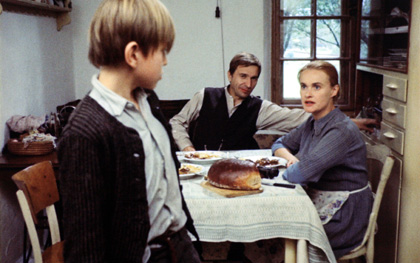
He returned to making short documentaries such as Prague Art Nouveau (Praha secesni, 1974), a visually beautiful evocation of one of the dominant modes of Czech visual art, before being allowed to direct a pair of children’s films. The second of these, Sirius (1974), returns to the territory of The White Dove in depicting the relationship between a boy and his beloved wolfhound Sirius, with lengthy scenes of them building an almost telepathic rapport in the countryside surrounding the railway signal box where the boy’s father works. It’s only relatively late in the proceedings that the film is established as a World War II saga, with the father and then Sirius himself accused of resistance activity.
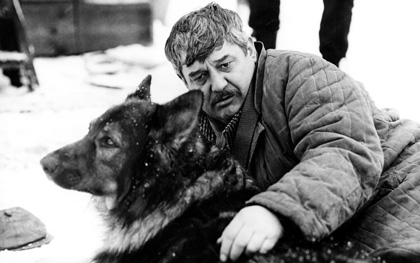
From the mid-1970s to the early 1980s, rural settings dominated Vlácil’s films. Smoke on the Potato Fields (D´ym bramborové nat, 1976), his first adult feature in nearly a decade, symbolically begins with a doctor choosing to return from a long Parisian exile to his native Czechoslovakia, where he builds an almost fatherly rapport with a pregnant young woman who has been disowned by her mother. Serpent’s Poison (Hadí jed, 1981) is about a similar relationship, in this case an actual father and daughter who meet for the first time after she tracks him down to an icy, godforsaken landscape whose chill is emphasised by Vlácil and Uldrich’s return to black and white for the first time since Valley of the Bees. Although the man is thrilled with this unexpected reunion, his alcoholism is too advanced for it to prove anything more than fleeting. Vlácil was no stranger to the bottle himself, and the scenes of his protagonist’s decline rank with Lost Weekend and Leaving Las Vegas in their despairing authenticity.
Very different in tone, Shadows of a Hot Summer (Stíny horkého léta, 1977) plays like a cross between one of the more politicised spaghetti westerns and Peckinpah’s Straw Dogs, as the inhabitants of a remote farm find themselves unwillingly thrust into a confrontation between the authorities and a band of Ukrainian resistance fighters. More than any of Vlácil’s films since the historical trilogy, it breaks out into moments of shocking violence: a newly shot bird collides with the farm roof before sliding down to the yard; the broken handle of a glass beer mug is used to punctuate a vicious threat in a bar. This was the last of Vlácil’s many collaborations with Zdenek Liska, a composer who matched the director’s unorthodox eye with an extraordinary ear for unexpected tonal colouring and unconventional instrumentation; here it’s part-Morricone, part central European pastoral, with a recurring theme played on what sounds like cowbells.
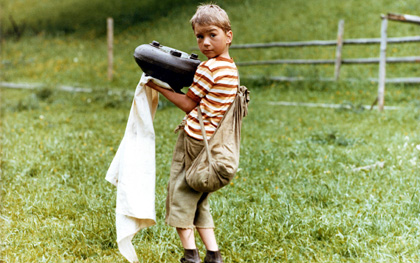
The Little Shepherd Boy from the Valley
Although nominally another children’s film, The Little Shepherd Boy from the Valley (Pasácek z doliny, 1983) is a companion piece in that it’s also set in 1947 and features guerrilla outlaws – though the protagonist here is a boy whose work as a cowherd is considered more important to his local community than his formal education. With no knowledge of history or politics, he treats his grandfather’s stories about the Goblin King as though they were news reportage, leading to a nail-biter of a set piece when he mistakes an unexploded landmine for a gift, and takes it into the village to show to the horrified mayor.

The final Vlácil film in the season, The Shadow of the Fern (Stín kapradiny, 1985), seems to be partly a tribute to Jan Nemec’s recently revived Diamonds of the Night (1964) in that it’s about two teenagers who go on the run and spend much of their time painstakingly negotiating oppressive tracts of woodland. But while Nemec’s film was a near-silent portrait of unambiguous victims, Vlácil’s is uncharacteristically talky, while his youths are morally compromised from the start by their cynical murder of a gamekeeper who catches them red-handed having just downed a deer (another recurring image in Vlácil’s films). Both films shared an editor in Miroslav Hájek, who intercuts present-day reality with hallucinatory sequences.
The season concludes with Sentiment (2003), Tomás Hejtmánek’s posthumous feature-length tribute to Vlácil, sourced from interviews conducted before the director’s death, which are re-enacted by actor Jirí Kodet. Intertwining sketches from Vlácil’s life, the memories of his colleagues and near-abstract shots of his film’s original landscapes, it is, one feels, exactly the kind of tantalising, elusive approach to biography that Vlácil himself would have thoroughly endorsed.
With thanks to Renata Clark of the Czech Centre, John Archer and Mehelli Modi.
‘Cinema as Poetry: Frantisek Vlácil’ runs at BFI Southbank, London throughout September, at Filmhouse Edinburgh from 4 September to 3 October and at Glasgow National Film Theatre from 7 to 28 September
See also
The Valley of the Bees reviewed by Michael Brooke (DVD, May 2010)
Out of the shadows: Ian Christie celebrates the films of Sergei Parajanov (March 2010)
The DVDs of 2008 (December 2008)
